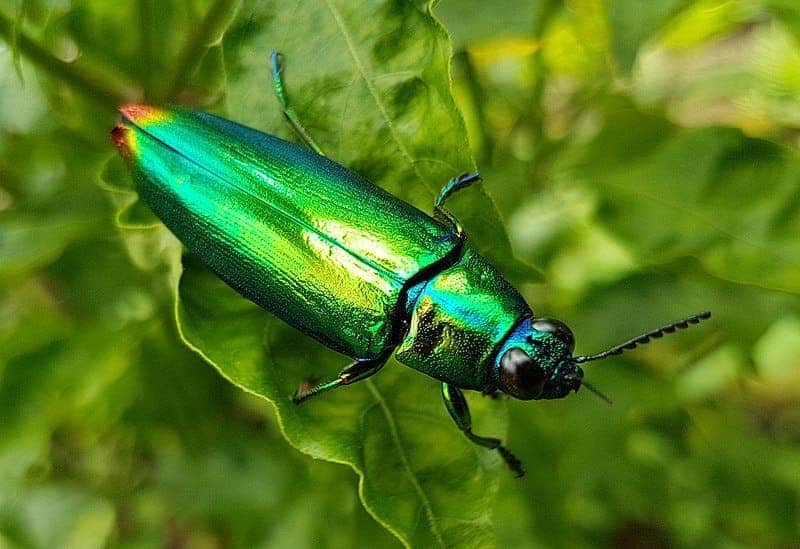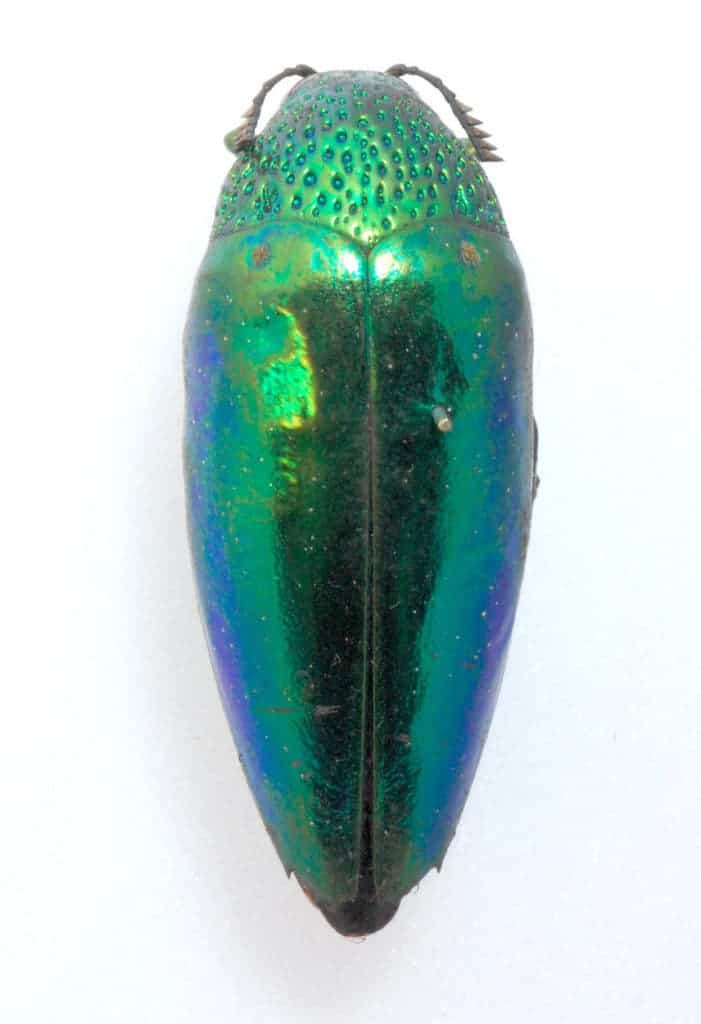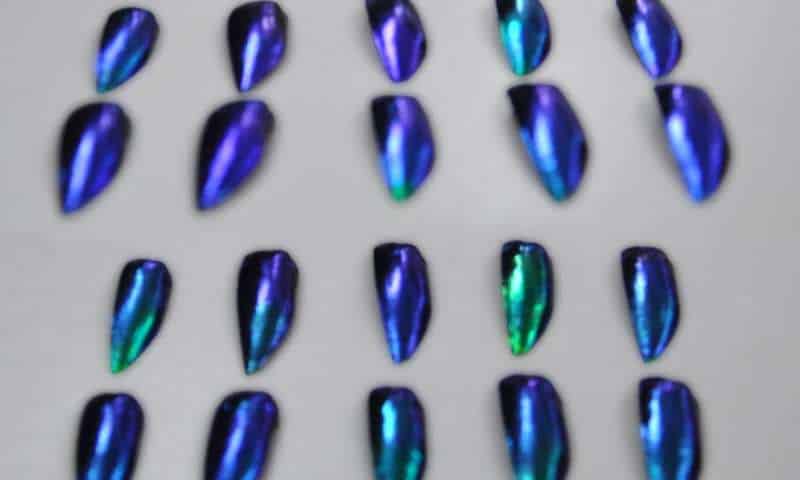Bright coloring, most often encountered in birds such as peacocks or songbirds, is often regarded as an evolutionary tradeoff. While fancy body decorations help individuals stand out among the pack, thereby making them more attractive to the opposite sex, they also make them more vulnerable to predators. But that’s not the case for jewel beetles (Sternocera aequisignata), whose green, blue, and purple iridescent wing cases actually act as camouflage.

If you pull out a credit card, you’ll notice that on the back there’s a holographic seal. By slowly changing the angle at which you view the seal, you’ll notice that any symbols or images imprinted on the seal will change color as well. This flashy, rainbow-like effect is known as iridescence.

There are many iridescent creatures in the animal kingdom, such as dragonflies, catfish and boa constrictors. But, although they may look conspicuous wearing such shimmering coats, these creatures are actually more protected against predators.
Writing in the journal Current Biology, a team led by Karin Kjernsmo, an evolutionary and behavioral ecologist at the University of Bristol, United Kingdom, strapped iridescent and dull-colored (green, purple, blue, rainbow, and black) wing cases to mealworms. The insect larvae were then placed in the field, in a natural setting, while researchers counted how many of each group got attacked by birds. There was also a detection test involving human volunteers who had to spot the wing cases in the field.
Despite their shiny appearance, the iridescent jewel beetle wing cases avoided detection from both birds and humans easier and more often than dull-colored wing cases.

“The idea of ‘iridescence as camouflage’ is over 100 years old, but our study is the first to show that these early ignored or rejected ideas that ‘changeable or metallic colors are among the strongest factors in animals’ concealment’ have traction,” said Kjernsmo in a statement. “Both birds and humans really do have difficulty spotting iridescent objects in a natural, complex, forest environment.”
The camouflage of the iridescent wing cases was the most effective when placed against a glossy leaf background. According to the researchers, this effect may be due to the “dynamic disruptive camouflage” properties of iridescence, creating the illusion of depth and inconsistent features, ultimately confusing predators.
In the future, Kjernsmo and colleagues plan on employing artificial intelligence systems to unravel hidden patterns that may tell us more about the evolution of camouflage. Work is already underway, in collaboration with behavioral ecologists and experimental psychologists at the University of Bristol, pitting various computer-generated camouflage patterns for different environments against those of real animals.
Was this helpful?



